Notice: There is no legacy documentation available for this item, so you are seeing the current documentation.
Did you know that All in One SEO Pro lets you add Schema markup for datasets?
This means that search engines can display rich snippets for your dataset like the example below.
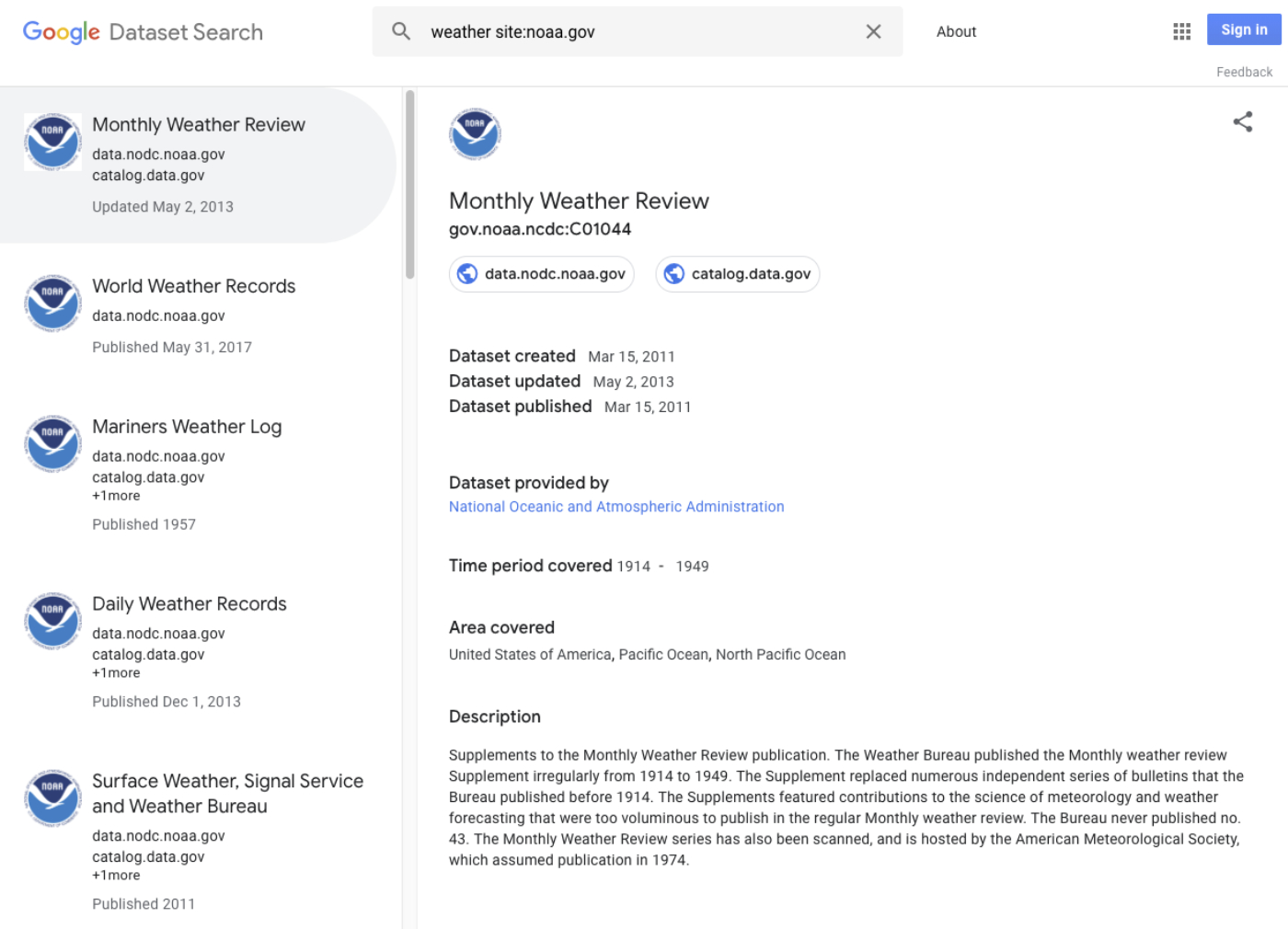
IMPORTANT:
You can’t force Google to display search results like this. It happens on a per search basis depending on whether they feel it’s the best way to display the results.
In This Article
Setting the Default Schema Type for all Datasets
To set the default Schema Type for your datasets, click on Search Appearance in the All in One SEO menu, then click on the Content Types tab.
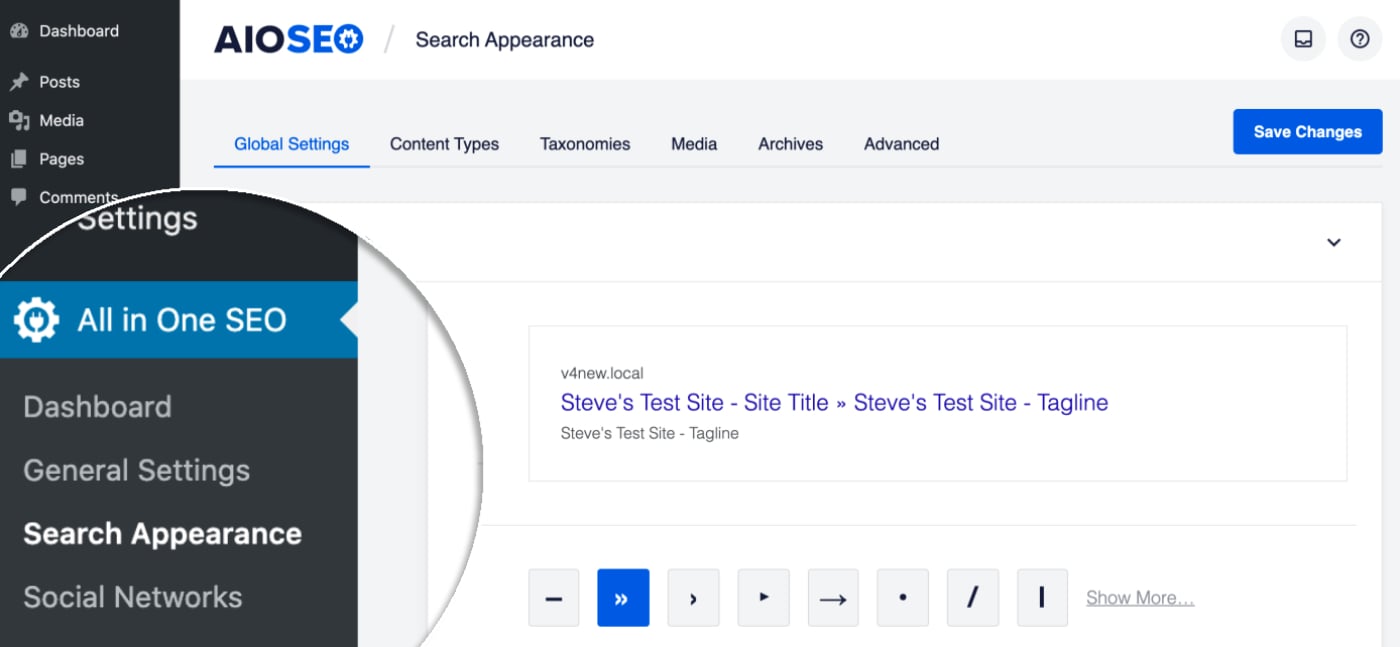
Scroll down to the section for your datasets and click on the Schema Markup tab.
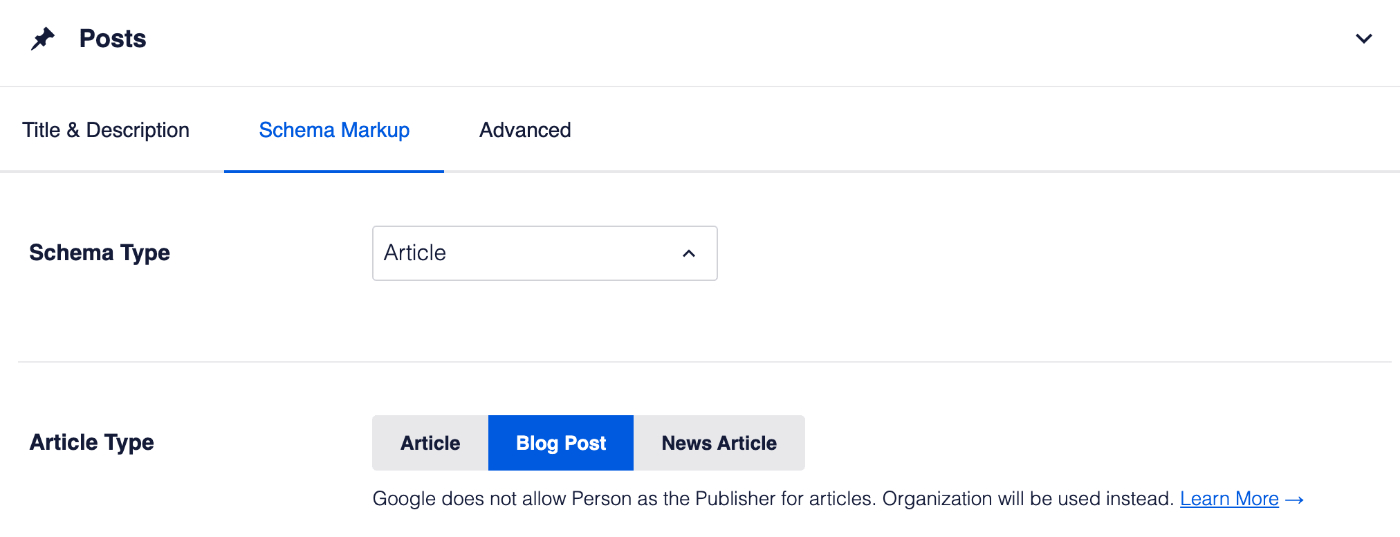
Now select Dataset in the Schema Type drop down and click the Save Changes button.
For more detail on this, please see our article on Configuring Schema Settings here.
NOTE:
Schema Controls for Datasets is available to customers with a Basic plan or above for All in One SEO Pro.
Upgrade to All in One SEO Pro today to get Dataset Schema and many more features!
Setting the Schema Type for Individual Datasets
To set the Schema Type for individual content, edit your content and scroll down to the AIOSEO Settings section, then click on the Schema tab.
Now, click the Generate Schema button to open the Schema Generator.

You’ll see the Schema Types that are available.
Click the Add Schema icon next to Dataset to add it.
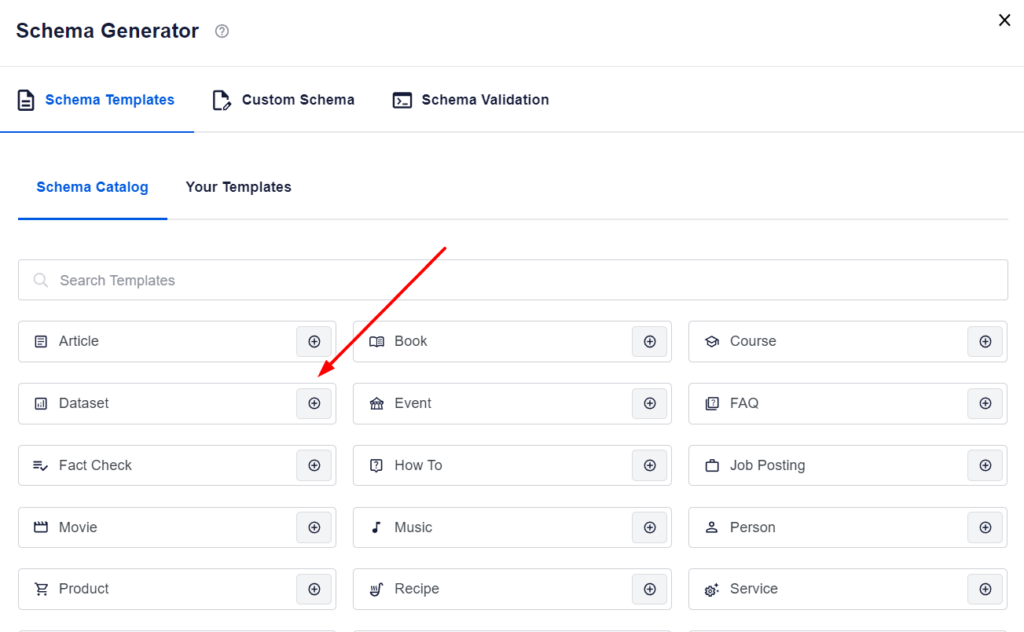
You can now edit the schema information.
Once done, click the Add Schema button to add the schema to the post.
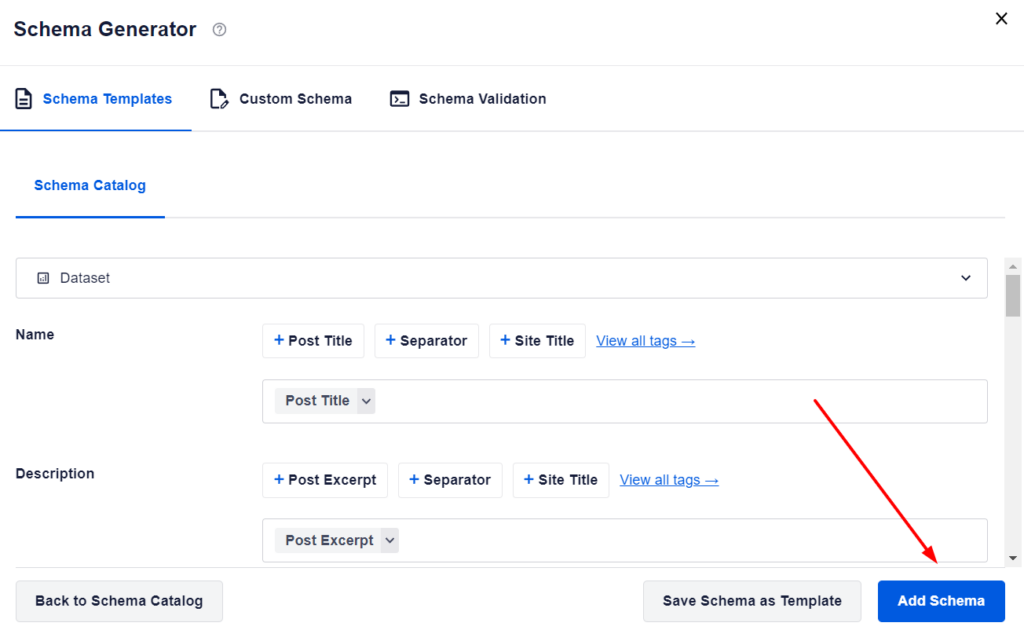
The Dataset schema has now been added to the post.
If you would like to edit any of the schema properties or delete the graph, click the Edit Schema or Delete Schema buttons in the graph card.

Configuring the Dataset Specific Information
When you click on Dataset as the Schema Type for your content, you’ll see a popup with additional fields where you can enter your dataset information.
NOTE:
The information you set in All in One SEO only appears in the source code of your content. It does not appear as content visible to visitors on your site.

Complete the fields as described below:
- Name – Enter the name of your dataset. By default, this is set to your post title.
- Description – Enter the description of your dataset. By default, this is set to your post content.
- Same As – Enter a URL that references the original publication of this dataset.
- Alternative Names – Enter any alternative names that might be used to refer to the dataset. These could be abbreviations or aliases.
- Data Catalog – Enter the name of the parent data catalog.
- Identifier – Enter the identifier such as a DOI or a Compact Identifier.
- License – Enter the license under which the dataset is distributed.
- Accessible for Free – Indicate whether the dataset can be freely used.
- Keywords – Enter one or multiple keywords that describe the dataset.
- Temporal Coverage – Enter the time period that is covered by the dataset.
- Spatial Coverage – Enter the specific coordinates where the measurements for the dataset were collected.
In the Sub Datasets section, you can set the following:
- Name – Enter the name of the sub dataset.
- Description – Enter the description of the sub dataset.
Click on the Add Another Sub Dataset link to add another sub dataset.
Click on the Delete button to delete a dataset.
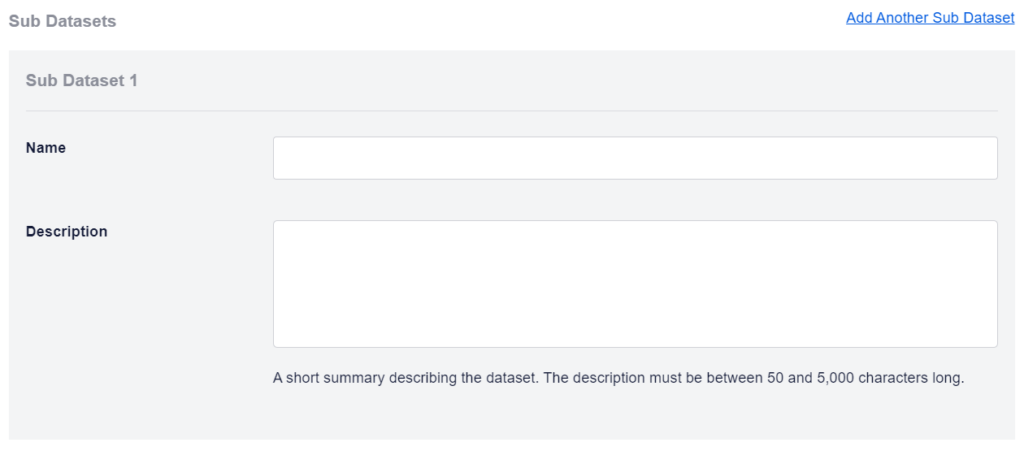
In the Downloads section, you can set the following:
- Encoding Format – Enter the file format for the download.
- Content URL – Enter the URL for the download.
Click on the Add Another Download link to add another download.
Click on the Delete button to delete a download.

Once you’ve completed the fields, click the Add Schema button to save them.
You can also save this as a template which you can use on other datasets by clicking the Save Schema as Template button.
You can learn about Schema Templates here.
Additional Information
Check out more documentation on our Schema Settings here.